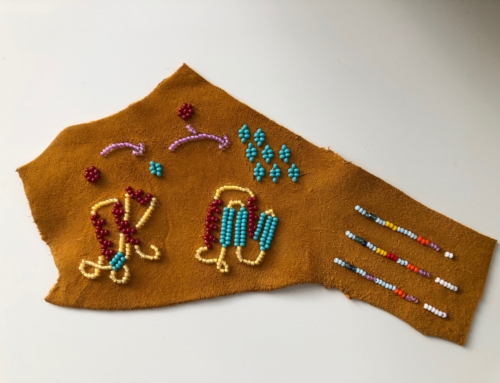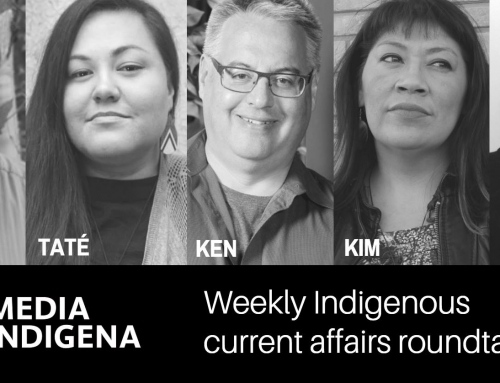
Roderick R. McInnes
I first wrote the blog entry below last November, a reaction to an important address given November 3, 2010 at the American Society for Human Genetics (ASHG) by outgoing president, Rod McInnes of McGill University. President McInnes’s address, Culture: the Silent Language Geneticists Must Learn–Genetic Research with Indigenous Populations, was published in the March issue of The American Journal of Human Genetics 88, 254-261, March 11, 2011.
You can see the first ten minutes of President McInnes’s address here on YouTube. Or you can go to the ASHG Web site and pay to view the entire address. Unless you were at the meeting. You should then have been sent login information.
11/03/2010 (original post date)
I am here at the American Society of Human Genetics (ASHG) annual meeting in Washington D.C. for the much anticipated (in my corner of the world) Presidential Address by outgoing society president, Roderick R. McInnes (McGill University, Canada).
Before sharing some of the exciting highlights of that speech . . . Whoa, the ASHG exhibit hall C is kitted out like a Las Vegas show, or one of those glitzy evangelical mega-churches that have risen up in U.S. American culture since the 1980s. Except these performances are subdued and precise. No instruments or singers. (Although Prez McInnes cracked some good jokes depicting the differences between U.S. Americans and Canadians.) Audience members created a nice low murmur fitting for the dimly lit cavernous convention hall. Blue and teal cloth draped from on high to the floor with huge ASHG logo and artsy looking double helix to backlight the plenary session stage. Gigantic overhead screens run advertisements for upcoming academic and industry meetings, and eventually show the speakers’ slides. There is seating for maybe a couple thousand in here. All of this and yet no wireless. Tweet plans disrupted.
While Dr. McInnes speaks of the language of “culture,” I think “distributive justice” and more “democratic science,” but our sense of the details and recommended changes to research ethics–which are well under way in some quarters–seems shared. Before recounting just the highlights of his talk (he’ll publish it in an upcoming issue of the American Journal of Human Genetics–AJHG). I want to thank him again for taking on this topic, and for taking it up so seriously. Pressure has been mounting for years from indigenous critics of genetic research, but meaningful change will also have to come from within the field. Judging by McInnes’ citations and they synthetic nature of his account, he reads considerably outside of his specialty areas, delving into cultural anthropology, law, and genome ethics and policy. He put together a coherent narrative for non-specialists in genetic research ethics of why the time is now, as he put it, for genetics researchers to “get inside the metaphorical tent of the indigenous populations” they study.
After cautioning the audience that we should be hesitant to judge earlier genetic studies of indigenous populations by today’s ethical standards (heads nodding all around me), McInnes provided highlights of genetic research on indigenous groups contested by those people–i.e. on the Nuu-chah-nulth Tribe from Vancouver Island, Canada and the Havasupai Tribe in Arizona. In these two cases consent was obtained and blood drawn for biomedical research but later used for human migrations research and, in the case of the Havasupai, additional stigmatizing biomedical research unwanted by the tribe was funded. McInnes also noted the smaller controversy that surrounded the Genographic Project’s blood draws in Alaska in which researchers were asked to return DNA samples until concerns about inadequate informed consent were rectified.
McInnes highlighted different indigenous cultural beliefs about DNA–some think it is sacred. As late Hopi geneticist Frank Dukepoo put it, “it is part of the essence of a person.” Genetics findings may also displant the origin narratives of indigenous peoples (and, I would add, key events in colonial history). If I can expand beyond what Dr. McInnes said, such narratives give indigenous peoples values for living, narrate our common history, cohere us as peoples with common moral frameworks, and tie us to sacred land bases. Both creation and colonial narratives circumscribe our geography, family relations, governance, and identity. Genetic knowledge, fascinating as it is, should not trump these weighty factors.
Beyond “cultural” concerns, McInnes highlighted the imperative to constitute research benefits and outcomes in broader terms. And then researchers need to pay attention to how indigenous peoples and not only researchers also accrue those benefits. Citing the Estonian Genome Project, McInnes noted the types of benefits that communities in that country expect to receive from that research, e.g. better healthcare, better healthcare delivery, technology development, economic development, and jobs. “Why,” he asked, “should aboriginal populations expect less?” Touché.
Importantly, McInnes called attention to the need for researchers to respect aboriginal jurisdiction of genetic research on their peoples. He paraphrased Deborah Harry of the Indigenous Peoples Council on Biocolonialism (IPCB)–that indigenous peoples are not so much anti-research as they are pro-indigenous rights. Illustrating that some research communities are ahead of others on these fronts he gave us the lowdown on the Canadian Institutes for Health Research (CIHR) Guidelines for Health Research Involving Aboriginal People. CIHR is the Canadian equivalent to our National Institutes of Health–NIH. A few of the highlights of those guidelines:
- Researchers should understand and respect Aboriginal world views.
- Researchers should agree to Aboriginal jurisdiction.
- Communities should be given the option of a participatory research approach.
- Community consent plus individual consent.
- DNA is “on loan” to researchers until its return is requested. All secondary uses must be re-consented. (McInnes cited Canadian geneticist Laura Arbour’swork and approach to collaborative research throughout the talk. For those of you unfamiliar with her work, check out her “DNA on Loan”)
- Pre-submission community review of publishable papers. (Key point: this review is not to block research findings from being published but to contextualize findings and correct any inaccuracies. This can help avoid stigmatization and other problems. See myGenographic/Seaconke Wampanoag entry for more on how indigenous review/input into publications makes papers more rather than less rigorous.
- Intellectual property benefits, education, and capacity building in research process should be addressed in a research agreement.
There is a lot more in the CIHR guidelines. What is more, they are in line with changes to research approaches advocated by indigenous critics for years now south of the Canadian border. Check back again. When it’s available, I’ll provide a link to Roderick McInnes’ published address in the AJHG. He also made some interesting points about lessons learned from research on indigenous populations being applied to genetics research ethics with communities more broadly.



